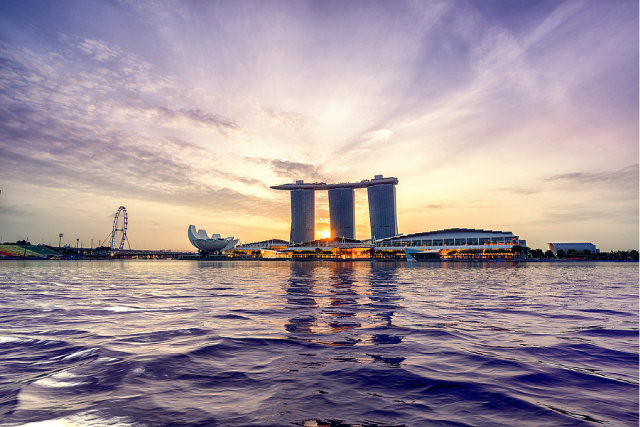
As you sip on your favourite iced tea or piping hot coffee at home, have you ever paused to wonder how Singapore got here? Not just the convenience, but the safety and reliability of the water you drink every day.
This National Day, as Singapore celebrates its 60th birthday, it’s worth turning the clock back to a time when such luxuries were unimaginable. The year was 1965, and Singapore had just become an independent nation facing one of the most pressing concerns for any new country: water.
The crisis that sparked a national awakening
When Singapore was separated from Malaysia in 1965, its future seemed uncertain, especially regarding access to clean water. At the time, the island relied heavily on imported water from Johor under agreements made in earlier years. Independence brought immediate concern about whether these supplies would continue, and if they didn’t, how would Singapore survive?
The situation wasn’t just about water scarcity; it was a national security issue. Singapore lacked natural water resources, had limited land for reservoirs, and faced potential political tensions over cross-border supply. This was a wake-up call that water security couldn’t be taken for granted. It had to be planned, earned, and protected.
Laying the foundations for water independence
With limited natural resources, the government set out on a determined path towards water self-sufficiency. The approach was multipronged and long-term: build more reservoirs, protect water catchment areas, and develop the infrastructure to treat and recycle water.
Perhaps most importantly, water became a central part of Singapore’s identity and planning. Policies were shaped not just around development, but sustainable water management. Every drop mattered. The Public Utilities Board (PUB) was formed, tasked with managing Singapore’s water supply efficiently. Education campaigns were launched to promote conservation, instilling a culture of water mindfulness in everyday life.
This push laid the groundwork for decades of progress, eventually giving rise to what many now see as the gold standard in urban water management.
A nation built on water resilience
Fast forward to today, Singapore boasts one of the most advanced and sustainable water systems in the world. We have NEWater, high-grade reclaimed water that’s used for both industrial and drinking purposes. Desalination plants supply potable water directly from the sea. The water catchment area now covers two-thirds of the island, and stormwater is collected, treated, and used efficiently.
This transformation didn’t happen overnight. It took political will, technological investment, and public cooperation. It’s a reflection as to how far we’ve come, and a reminder that hardship often inspires the most meaningful progress.
And now, many of us enjoy the ease of getting a glass of cool water or a warm cup of tea instantly at home or in the office. It might seem like a small thing, but it represents the massive journey from scarcity to self-reliance.
The role of innovation in everyday life
Singapore’s commitment to water innovation has extended into households and businesses alike. Beyond just the national supply, there’s been a widespread shift in how people manage their own water consumption and access.
Technologies like water-saving taps, smart showers, and advanced filtration systems are increasingly common. And the popularity of home-use water systems, such as an instant hot and cold water dispenser, is a good example of how modern living reflects these innovations. These systems not only provide convenience but also help ensure a steady supply of clean, temperature-controlled water for busy homes and offices, doing so in a way that echoes Singapore’s national goal of making water accessible and safe for everyone.
As people become more health-conscious and environmentally aware, discussions around distilled vs filtered water also emerge. While preferences vary, what remains constant is the emphasis on quality and safety, values deeply embedded in Singapore’s water journey.
Lessons still relevant today
The 1965 water crisis wasn’t just about physical access to water. It was about vulnerability, resourcefulness, and resilience. It showed Singaporeans that determination and planning could overcome even the most daunting challenges.
The crisis led to a nation where sustainability is not a buzzword but a way of life. Where future generations are taught about the importance of water conservation from an early age. Where even policies unrelated to water, like land development and urban planning, are made with water sustainability in mind.
This forward-thinking mindset is why we can confidently fill our water bottles at stations across the city or boil water directly from dispensers at home without worry. And why, even in times of climate uncertainty, Singapore remains committed to keeping its water future secure.
Celebrating 60 years with reflection and progress
As we hang our flags and enjoy fireworks this National Day, it’s more than a celebration of independence. It’s also a tribute to how far we’ve come as a nation. The 1965 water crisis could have broken Singapore, but instead, it became the catalyst for a legacy of innovation, unity, and sustainable living.
So, the next time you take a sip of your tea or top up your reusable bottle with a quick push of a button, take a moment to appreciate what that means. It’s not just convenience. It’s history, foresight, and national pride, all in a single glass of water.
Conclusion
Looking to enjoy that same ease and quality of water at home or in the office? Watermaxx offers a range of innovative water solutions tailored to your lifestyle. From advanced instant hot and cold water dispensers to water purification systems, our products are designed with your comfort and Singapore’s high water standards in mind.
Choose Watermaxx, where innovation meets everyday living.
